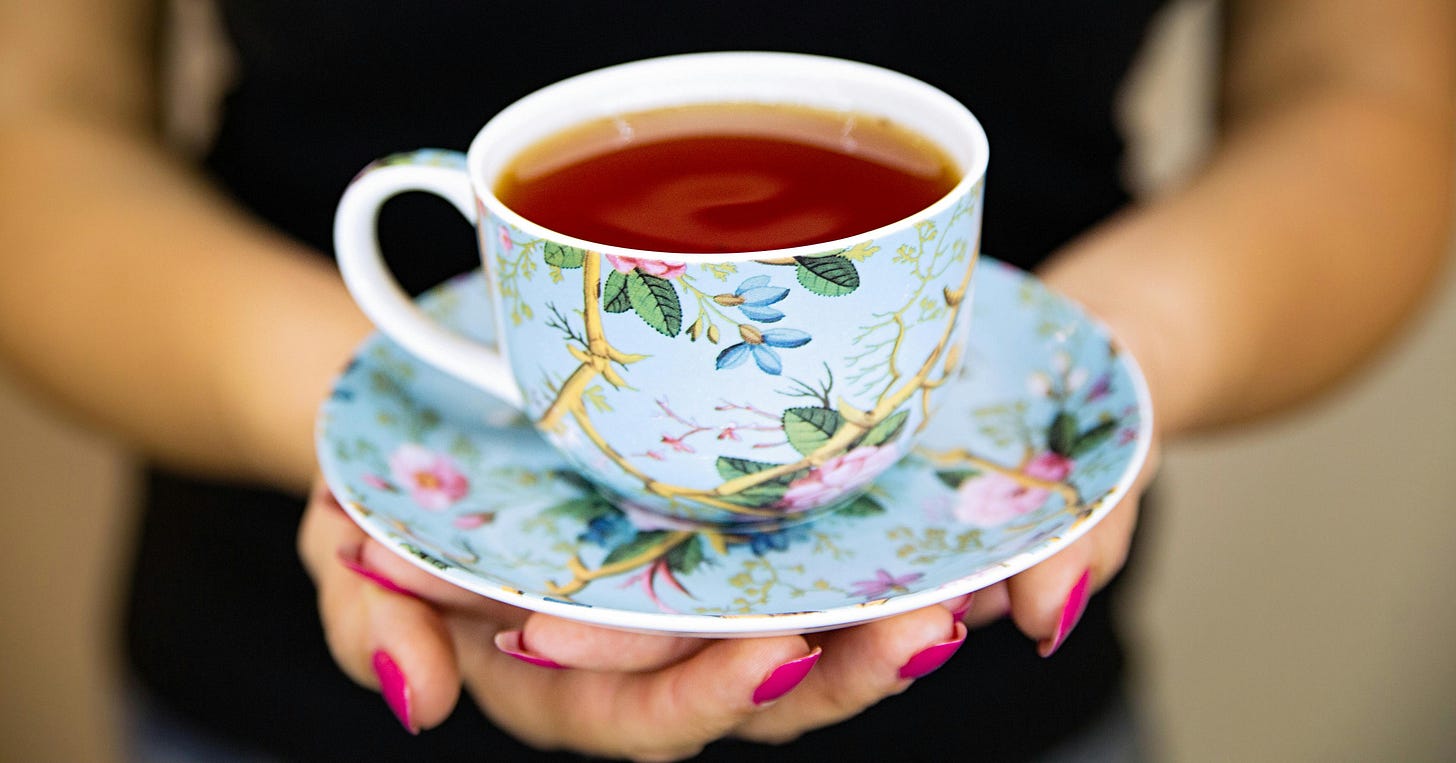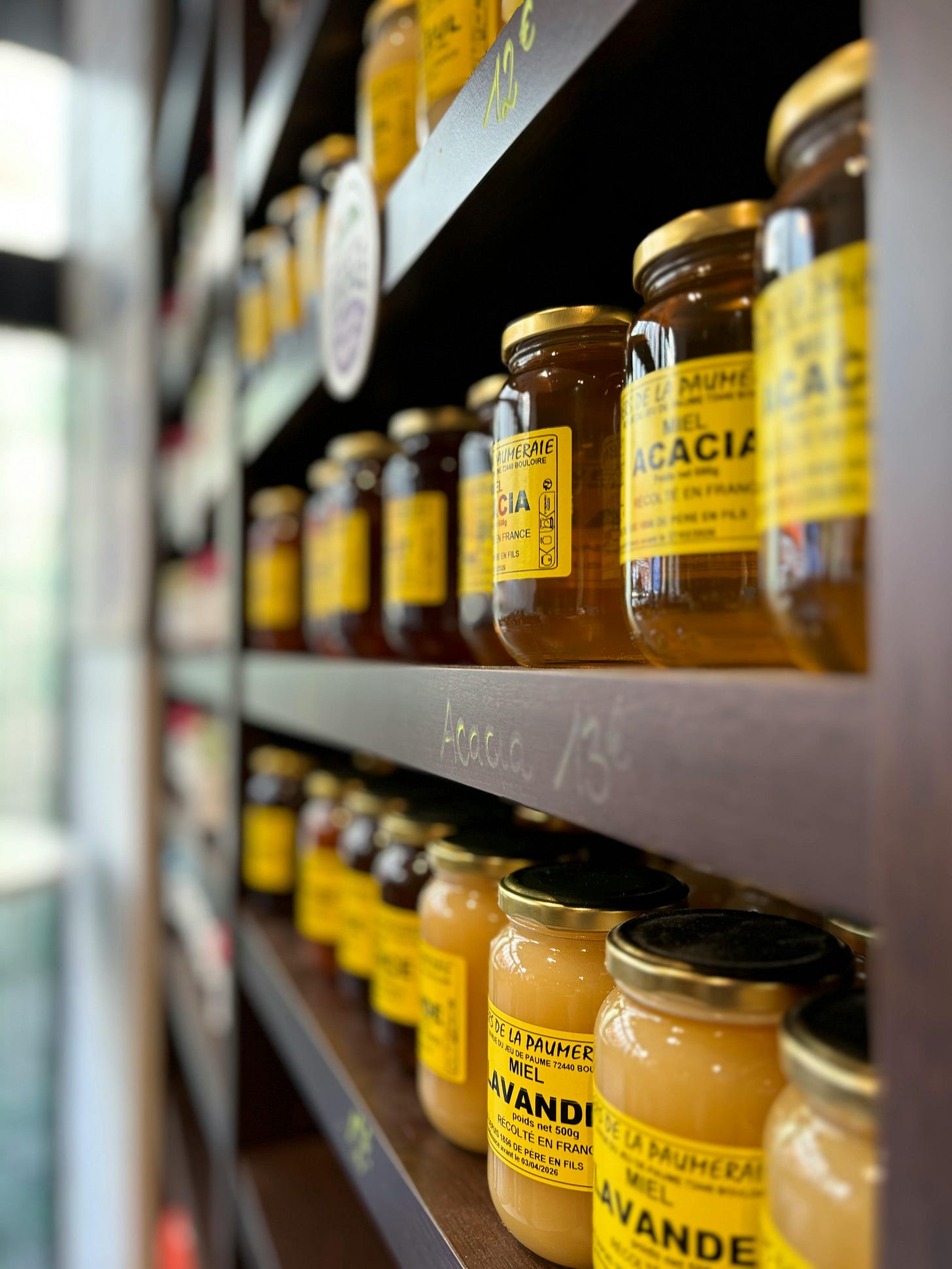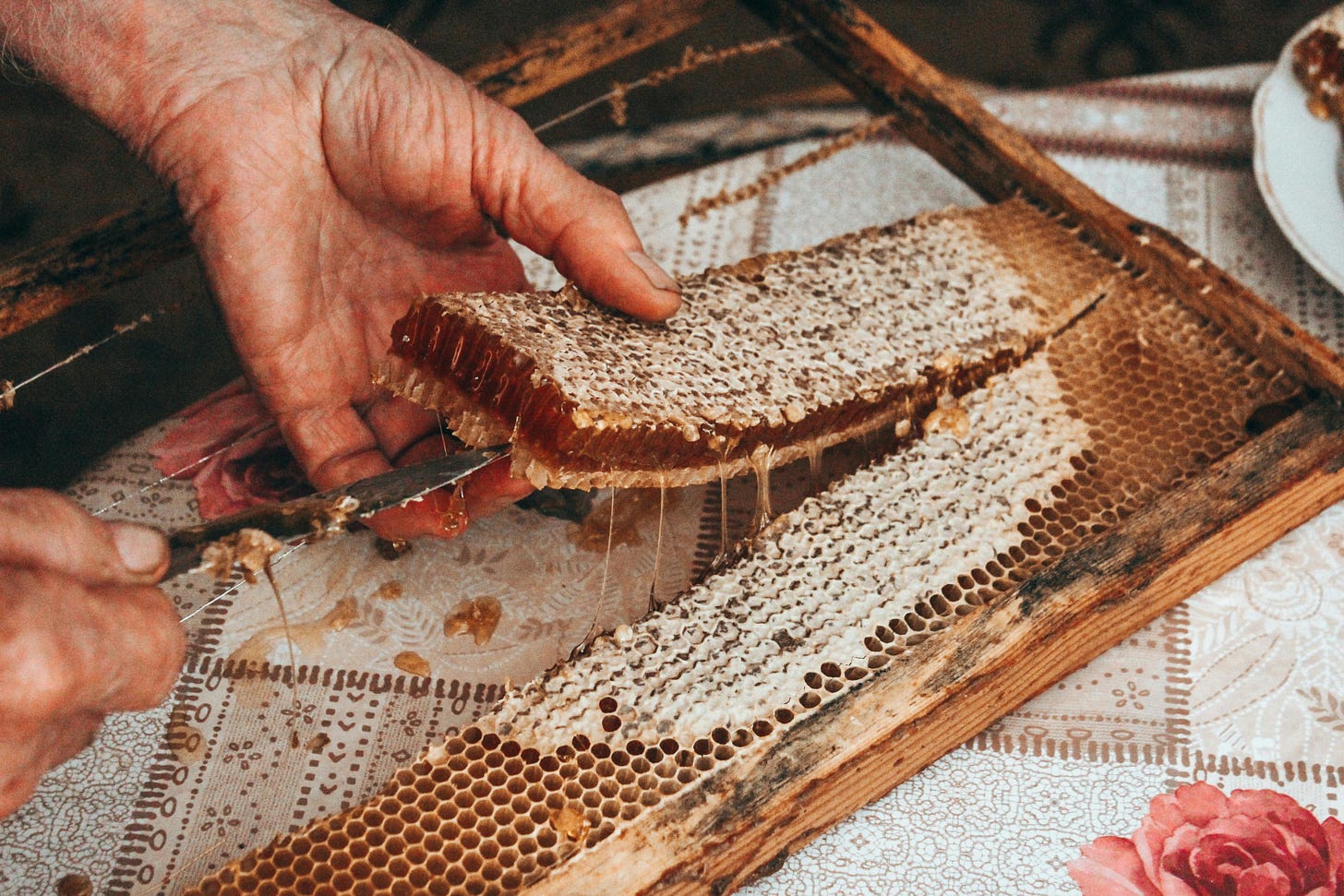76% of Store-Bought Honey is Adulterated in Some Way (and Mislabeled)
Reading the labels won't protect you from "honey fraud".
I have always loved natural honey.
In fact, I wrote about natural honey in an earlier post, which you can review on your own (so I won’t repeat myself here).
As a long-time tea-drinker, I’ve found that honey is the best way to add a little sweet to my tea to boost the flavor and cozy up with a warm cuppa.

The challenge with natural honey - especially when traveling - is that you can’t (or shouldn’t) pack it in your luggage or carry-on bags unless you are looking for trouble.
And, you can’t always find the best honey when you really want it.
Enter: honey packets.
Just like those little packets of ketchup, you can find honey in packets, as well.
They are convenient for travel, you know how big a serving size is (the whole packet is usually one serving), and after squeezing out what I can, I like to put the open end of the spent packet in my mouth and taste that yummy natural honey goodness.
But, what if that golden-brown sticky sweetness turns out to be imitation honey?
How would you know?
Just read the labels… right?
❌ Spoiler Alert ❌
Not all ingredients are listed on food labels!
76% of store-bought “honey” is mislabeled, hiding processed ingredients (like HFCS, sugar syrups, and artificial flavoring) from consumers while aiming to reduce the cost of producing commercial honey products.
👇 Keep reading 👇
Imitation Honey Ingredients
Imitation honey products that clearly state that they are not honey are a sugar-based product that mimics the taste and appearance of real honey but is not made from bees or nectar.
When you read the labels, you will find these (or similar) ingredients:
High fructose corn syrup (HFCS) or corn syrup: These provide the sweetness and viscosity.
Sugar: Often used to add bulk and sweetness.
Natural or artificial flavorings: To replicate the floral taste of honey.
Coloring: To give it a honey-like appearance, typically caramel coloring.
Citric acid or other acids: Sometimes added to adjust the pH and consistency.
Water: To create the right texture and thickness.
Not exactly natural, are they?
You might want to check my The Goo Index to see if any of the ingredients on your honey packets are processed “Goo”.
Why Does Imitation Honey Seem Extra-Sweet?
Some commercial honey producers add ingredients to real honey to make it sweeter, thicker (or thinner), or to change the color.
If it’s sweeter, that’s usually because imitation honey has high-fructose corn syrup or other sugars that make the the flavor more intense.
But you may also find that imitation honey is less complex in flavor when compared to natural honey. This is because bees create honey from many different kinds of flowers.
While imitation honey can be formulated to resemble honey’s taste, it’s often simpler and less nuanced, and the flavor may be less fragrant.
Why Not Just Use Natural Honey?
There are so many reasons that natural honey may not be used. Some reasons are just personal preference (in the case of Vegans), and other reasons are commercial.
Vegan Preferences
Some consumers opt for imitation honey as a vegan alternative since true honey is produced by bees, and vegans avoid animal products.
Cost
Imitation honey is significantly cheaper to produce than real honey.
Real honey involves beekeeping, which requires care, land, and resources, making it more expensive.
Imitation honey, on the other hand, can be made using readily available and low-cost ingredients like corn syrup and sugar.
Sustainability & Supply
There are concerns about bee population decline, which has led to reduced honey production in certain areas.
In regions where honey is scarce or expensive, imitation honey provides a more stable, affordable option.
Shelf Stability
Imitation honey, due to its sugar-based ingredients, can have a longer shelf life than real honey, which may crystallize or spoil over time.
Regulatory Issues & Standards
The global honey market is sometimes affected by adulteration issues (where honey is diluted or mixed with other sweeteners).
Imitation honey can be marketed as a consistent, standardized product, avoiding these complications.
But what about products that are labeled with “Real Honey” or “Pure Honey”?

The Hidden Truth About Grocery Store Honey
As I was doing research to write this piece, I was dismayed to find out that 70% of honey sold worldwide is adulterated and/or mislabeled in some way.
Here are some scary findings that might make you want to quit buying honey altogether (read to the bottom!):
Food Safety News (2011 Report). Investigators found that 76% of grocery store honey samples had all pollen filtered out, making it impossible to verify authenticity. (source)
U.S. Pharmacopeia Database (Honey Adulteration Reports). The reporting identified widespread honey fraud, including the addition of rice syrup, beet syrup, and high-fructose corn syrup. (source)
EU Food Fraud Network (Joint Research Centre). An investigation of 320 honey brands imported from 20 countries and randomly sampled between November 2021 and February 2022 identified that 147 samples (46%) were suspicious to be adulterated. (source)
Here are more references on this topic, if you want to really dive in:
FDA Releases Report on Economically Motivated Adulteration in Honey
FY22/23 Sample Collection and Analysis of Imported Honey for Economically Motivated Adulteration
Proper Labeling of Honey and Honey Products: Guidance for Industry (download report directly)
EU Coordinated action to deter certain fraudulent practices in the honey sector
How to Avoid Fake Honey
Many people assume store-bought honey is the same as what comes from a beehive, but in reality, the honey industry is full of fraud.
The "honey" on store shelves may be closer to imitation honey than you think.
Here’s what you can do to avoid being deceived:
Buy local, raw honey from trusted beekeepers.
Check for crystallization. Real honey will crystallize over time, while many fake honeys remain liquid forever.
Do a water test. Put a drop of honey in a glass of water. Real honey sinks and dissolves slowly, while adulterated honey often dissolves quickly.
Buy honeycomb. Use 100% natural honey that is straight from the hive.

If you’re not sure about a specific ingredient and want to learn more about whether it qualifies as Goo, leave a comment or reach out and ask me!
And if you enjoyed reading this story, but aren’t ready to subscribe, you can:
(a Goo-Free coffee, of course!)







Well, I still feel good about my strategy of buying local raw honey, but I'll a level up skepticism, especially at the grocery store. Thanks!
Good article. I watched a documentary about this honey fraud, and it made me pay special attention before purchasing.
Thanks for the “test” information. ❤️